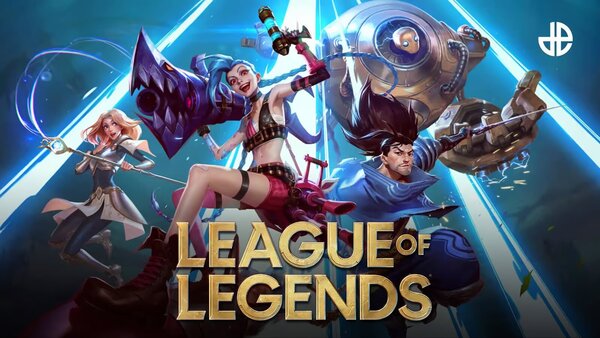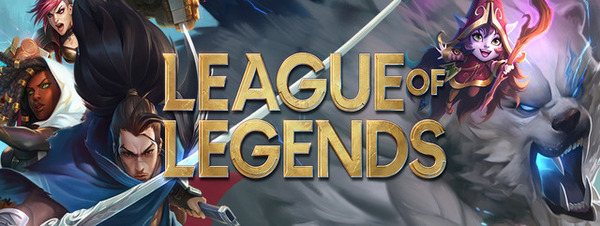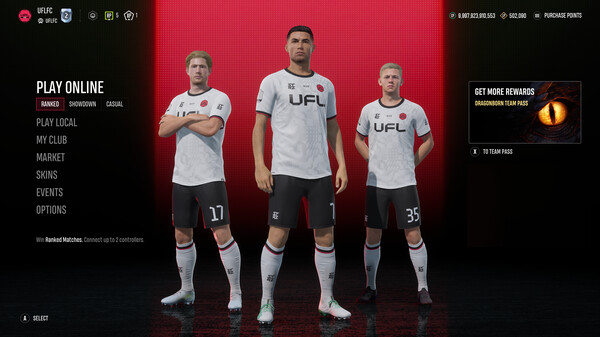Introduction
League of Legends (LoL), the world-renowned multiplayer online battle arena (MOBA) game developed by Riot Games, has become a global phenomenon. With over 100 million monthly players and a vibrant esports scene, it continues to dominate the gaming industry. However, despite its immense success, the game has long struggled with a serious issue: player toxicity. Toxicity refers to negative behaviors that include verbal abuse, trolling, intentional feeding, and other disruptive actions that degrade the experience for others. Over the years, Riot Games has implemented various measures to combat toxicity, but the problem persists. This article delves into the issue of toxicity in League of Legends, examining how it evolved, the efforts to address it, and why it continues to plague the game.

The Early Days of League of Legends: Toxicity Lurks
When League of Legends was first released in 2009, it quickly gained a large and passionate player base. The game's competitive nature, coupled with the stress of ranked play, led to the emergence of toxic behaviors early on. Players who performed poorly or failed to live up to expectations often vented their frustration by attacking teammates, leading to a toxic environment in both casual and ranked games.
At this point, Riot Games was focused on expanding the game’s content, improving its balance, and creating new champions. Toxic behavior wasn’t initially seen as a priority for the developers, who were more concerned with technical and gameplay issues. As the game grew in popularity, however, the issue of toxicity became more pronounced, and players began to report an increasing number of unsportsmanlike actions.
The Rise of Toxicity: The Impact of Ranked Play
As League of Legends grew in both popularity and competition, the pressure associated with ranked play intensified. Players began to place greater importance on their ranking and personal performance, which fueled a more hostile environment. Ranked games were (and still are) the core mode for competitive players, and the anxiety of losing a match or being blamed for a team's failure led to verbal abuse, flaming, and toxic behavior.
One of the most significant drivers of toxicity was the introduction of the League system, where players were assigned ranks such as Bronze, Silver, Gold, and so on. As players strived to climb the ladder, losing a game often felt like a setback, leading to frustration. The pressure to perform well in every match made players more susceptible to unleashing their anger on others. Meanwhile, Riot Games was becoming more aware of this growing issue and started exploring potential solutions.

Riot’s Early Responses: The Honor System and Tribunal
In an attempt to address toxicity, Riot Games implemented two major systems: the Honor System and the Tribunal. The Honor System, introduced in 2012, allowed players to commend teammates for good behavior, rewarding sportsmanship and teamwork. The Tribunal, on the other hand, was a player-driven reporting system where players could vote on whether a reported player was guilty of toxic behavior. If enough votes were cast in favor of punishment, the offending player would be penalized with a temporary ban or other consequences.
While the Honor System was well-received by players who wanted to reward positive behavior, the Tribunal was met with mixed reactions. Some players saw it as a good tool for holding others accountable, while others felt it could be abused, leading to false reports. Additionally, players noticed that the Tribunal often failed to punish the most egregious toxic behavior, especially when the player in question had many friends or a group of people voting in their favor. Despite these early efforts, toxicity in League of Legends persisted.
The Evolution of Riot’s Anti-Toxicity Efforts: Reporting Systems and Penalization
As the years went by, Riot Games began to shift its approach to tackling toxicity. In 2014, they reworked the reporting system, making it more intuitive and accessible. The goal was to make reporting toxic players easier and more transparent. Riot also expanded their focus beyond verbal abuse to include trolling, intentional feeding, and disruptive gameplay behavior, which were also damaging to the player experience.
In addition to these changes, Riot increased the severity of punishments for toxic behavior. While early punishments were relatively lenient, the introduction of the "LeaverBuster" system in 2015, which penalized players for abandoning games, was part of a larger effort to tighten enforcement. Players who were consistently negative, abusive, or disruptive began to receive escalating penalties: from chat restrictions to temporary bans and, in extreme cases, permanent bans.

Player Toxicity in the Competitive Environment
One of the most critical challenges Riot faces in combating toxicity is the competitive nature of League of Legends itself. Unlike other multiplayer games, where players can enjoy a casual experience, League’s emphasis on teamwork, strategy, and skill creates a high-stakes environment. When players feel that their efforts to win are being undermined by a teammate, they are more likely to lash out in frustration.
The ranking system exacerbates this issue. The higher the stakes of a match, the more emotionally charged it becomes. Players in high ELO (high-level ranked) games, where the competition is fierce, are particularly vulnerable to toxic behavior. The community's emphasis on winning can create a toxic atmosphere, where players prioritize their rank over teamwork and sportsmanship, leading to verbal insults, trolling, and other disruptive actions.
Community-Driven Solutions: The Role of Moderators and Content Creators
In addition to Riot's in-game measures, the League of Legends community has played a significant role in addressing toxicity. Many streamers, content creators, and professional players have used their platforms to promote good behavior, kindness, and positive interactions. By fostering a culture of respect and sportsmanship, these influential figures have worked to shift the narrative of the League community away from negativity.
Community moderators and players also play a key role in curbing toxicity. Many organizations, such as fan-run forums and Discord servers, actively moderate player behavior and encourage healthy discussions. These efforts, while not perfect, have helped to create sub-communities that champion kindness and constructive criticism, counteracting the toxicity present in mainstream matches.
The Role of Technology: Machine Learning and AI in Detecting Toxic Behavior
Riot Games has increasingly turned to technology to combat toxicity, employing machine learning algorithms and artificial intelligence (AI) to detect and penalize toxic behavior more efficiently. In 2018, Riot introduced a new system known as "Instant Feedback Reports," which uses AI to automatically detect abusive language, trolling, and negative behavior in real time. This system allowed for faster punishment, reducing the reliance on player reports and improving the overall enforcement process.
AI systems were also used to analyze chat logs and detect patterns in player behavior. With these advancements, Riot was able to identify repeat offenders more quickly and issue penalties before the player’s behavior spread throughout the game. The system continues to evolve, and Riot has expressed a commitment to using AI and machine learning to create a safer, more enjoyable gaming experience for everyone.
Revisiting the Honor System: Reinforcing Positive Behavior
In addition to tackling toxicity, Riot Games has made efforts to encourage positive behavior through the Honor System. After its initial introduction, Riot improved the system to allow players to track their progress in terms of sportsmanship, kindness, and teamwork. Players who were consistently honorable could earn rewards like in-game skins or experience points, incentivizing good behavior. Riot also introduced the "Honor 5" rank, a prestigious tier reserved for the most positive players in the game.
While the Honor System has seen success in promoting positive behavior, it has not been without its flaws. Some players feel that the system doesn't do enough to reward positive actions in a meaningful way, while others argue that the emphasis on rewards detracts from the intrinsic value of good sportsmanship. Despite this, the Honor System remains a key component of Riot’s strategy to encourage a healthier community in League of Legends.
Why Toxicity Persists: The Underlying Causes
Despite Riot’s extensive efforts to curb toxicity, the problem persists. One of the primary reasons is the deeply ingrained competitive nature of League of Legends, which encourages intense emotions. The game’s mechanics also do not help matters; the complexity of the gameplay and the reliance on teammates make losing feel particularly frustrating. Furthermore, the anonymity of the internet enables players to behave in ways they might not in real life, emboldened by the lack of consequences.
Another contributing factor is the inherent toxicity found in online gaming communities. While League of Legends has taken significant steps to address the issue, other games have similar problems. The culture of competitiveness, alongside a general lack of accountability, creates a breeding ground for toxic behavior. While Riot continues to make improvements, toxicity in online gaming is a broader issue that may require systemic changes in how communities are structured and managed.
Future Directions: What Needs to Change?
Looking ahead, there are several strategies Riot Games could pursue to further mitigate toxicity in League of Legends. One potential solution is to refine the matchmaking system to reduce the frustration caused by mismatched teams. Another strategy could involve improving the player ranking system to better reflect teamwork and collaboration rather than individual skill alone. By placing more emphasis on teamwork, players might feel less inclined to blame others and engage in toxic behavior.
Furthermore, continued advancements in AI technology could allow for even more precise detection of toxic behavior, making it possible to identify problematic players before their actions negatively impact the community. Lastly, Riot could explore expanding their educational initiatives, helping players better understand the effects of toxicity on the community and encouraging them to take responsibility for their actions.
Conclusion
Toxicity remains one of the most significant challenges facing League of Legends, even as Riot Games continues to introduce new measures to address the issue. While improvements have been made in terms of reporting systems, penalties, and positive reinforcement, the underlying issues of competition, anonymity, and frustration continue to fuel toxic behavior. However, as the game evolves, so too does the potential to create a more respectful and inclusive environment for all players. With ongoing efforts from Riot Games, the community, and technological advancements, there is hope that League of Legends can one day become a model for how to combat toxicity in online gaming.























